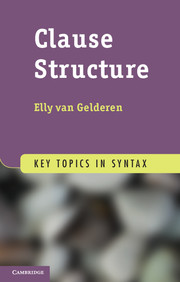4 - The TP-Layer
Published online by Cambridge University Press: 05 June 2013
Summary
This chapter examines the layer where tense, mood, and aspect, as well as the grammatical functions of subject and object, are indicated. Of the three layers, the TP-Layer is perhaps the one that shows the most cross-linguistic variation, not only in TMA but also in agreement and grammatical case. We’ve seen some of this variation in Chapter 2 when we discussed the finite clause.
Roles and functions can be marked by position or morphology. In English, the grammatical roles are marked through their position and through some agreement on the verb. Case on the noun can mark the grammatical and semantic roles, but, because English lost most overt case marking in its 1500-year history, case is hard to use as a criterion for deciding the grammatical function.
In Section 4.1, we’ll look at how the TP was first introduced and then justify the attempts to expand and restrict it. In Section 4.2, we’ll describe a Cartographic approach to tense, mood, aspect involving both auxiliaries and adverbials. In Section 4.3,we’ll look at the positions of the subject and object and at displacement,mainly by discussing the EPP. Section 4.4 deals with case and agreement. In Section 4.5, some cross-linguistic observations are made. Section 4.6 is a conclusion that revisits all the features of the TP-Layer needed in a probe-goal approach.
- Type
- Chapter
- Information
- Clause Structure , pp. 115 - 149Publisher: Cambridge University PressPrint publication year: 2013



